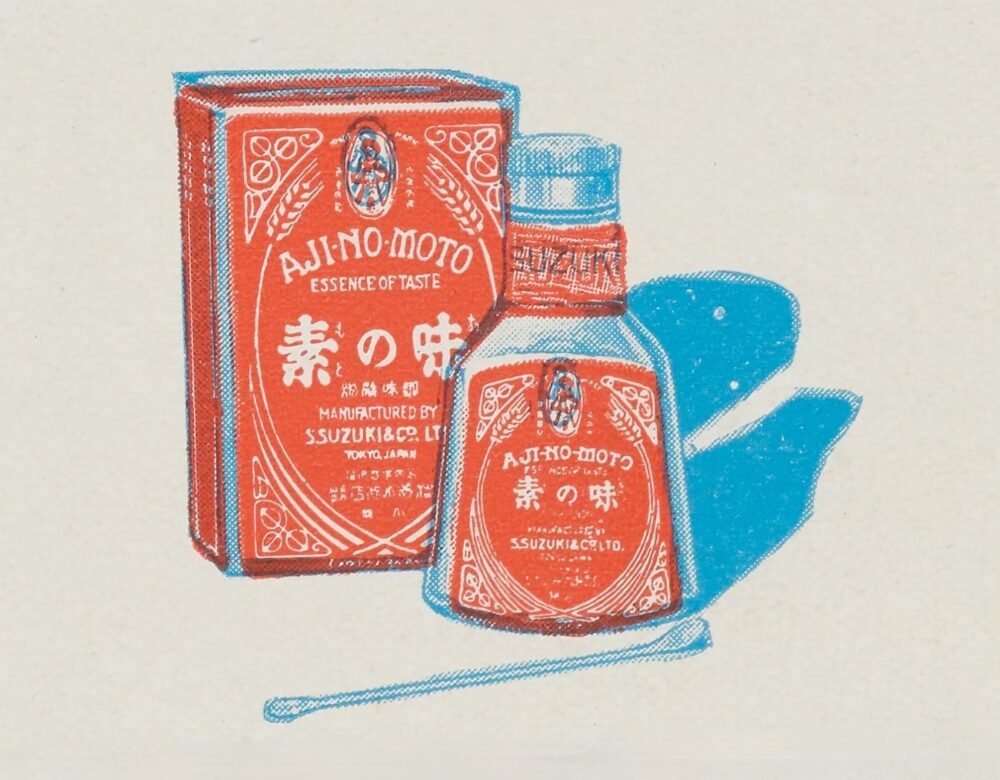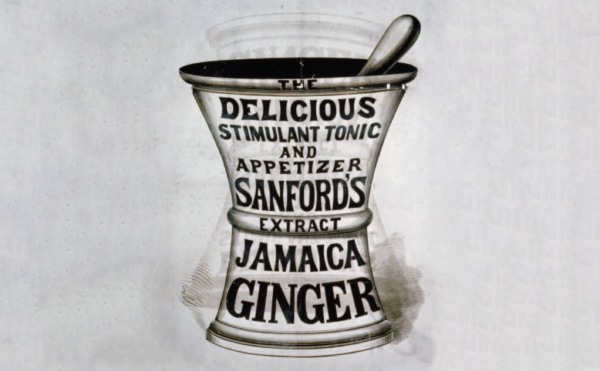Many people may have heard that MSG isn’t good for you, but do they even know what the food additive is, how it was used for decades in the United States, or when the “discovery” of adverse symptoms related to it began? Some bad science (and potentially a hoax) set off a firestorm against MSG a half a century ago.
About The Disappearing Spoon
The Science History Institute has teamed up with New York Times best-selling author Sam Kean to bring a second history of science podcast to our listeners. The Disappearing Spoon tells little-known stories from our scientific past—from the shocking way the smallpox vaccine was transported around the world to why we don’t have a birth control pill for men. These topsy-turvy science tales, some of which have never made it into history books, are surprisingly powerful and insightful.
Credits
Host: Sam Kean
Senior Producer: Mariel Carr
Producer: Rigoberto Hernandez
Associate Producer: Sarah Kaplan
Audio Engineer: Jonathan Pfeffer
Transcript
Dr. Robert Kwok couldn’t believe it was happening again. He put down his chopsticks and tried to calm himself. It didn’t work. His heart began racing, and his arms and neck went numb. Why did Chinese food do this to him?
Kwok, a pediatrician, was an immigrant to the U.S. from southern China. Sometimes, though, he craved northern Chinese food and would visit a restaurant near his home in Maryland.
Unfortunately, like thunder follows lightning, he always felt awful afterward. A racing heart, fatigue, numbness. Which left Kwok baffled. Why would northern Chinese food cause those symptoms?
Kwok had some guesses. Maybe it was the food’s high salt content. Or maybe the cooking wine northern chefs used. But those were just stabs in the dark. So in early 1968, Kwok wrote a letter to the New England Journal of Medicine detailing his symptoms. He was curious what other doctors thought.
And boy, did other doctors have thoughts. Letters poured into the journal, some of them indulging in wild speculation about the cause of Kwok’s symptoms. Soon, however, most of the suspicion focused on one ingredient—monosodium glutamate, or MSG.
The funny thing was, until that point, people had been eating MSG for decades. And no one ever imagined it was poison. But as we’ll see, hysteria, psychological suggestiveness, and bad science are very powerful things.
The introduction of MSG to the United States took nearly a half-century.
As we heard last episode, a Japanese chemist named Kikunae Ikeda invented MSG seasoning in 1908. He aimed to give foods a fuller, richer, more umami flavor. His MSG crystals looked like sand initially. He later developed a version that was gleaming white, like sugar.
MSG was hardly a hit at first. Restaurants and soy-sauce makers shunned it as too newfangled. So Ikeda’s company, Ajinomoto, pivoted to target new markets.
One market was Buddhists. Many Buddhists are vegetarian, and protein-rich MSG gave their food a meaty, rich flavor without the actual meat.
Ajinomoto also targeted housewives. It pushed MSG especially hard in so-called finishing schools that prepared the daughters of elite families for marriage. The connection to the elites made MSG seem fashionable. The company even packaged MSG in elegant glass bottles, like expensive perfumes.
These tricks worked. In the 1910s and 1920s, MSG seasoning quickly grew in popularity in Japan.
MSG made inroads in foreign markets as well—although for less noble reasons. In the 1930s Japan began colonizing East Asia. MSG flavoring followed the sword. And in China especially, MSG from Japan was associated with imperialism.
Nevertheless, many Chinese people liked the taste of MSG. So non-Japanese knockoff brands arose in China. And it’s through these knockoffs, and Chinese food in general, that MSG entered American cuisine.
The U.S. and China were allies against Japan during World War II. As a result, MSG-rich Chinese food became popular in the U.S. in the 1940s. American chefs and food manufacturers then adopted MSG for new dishes. They added it to canned soups and frozen TV dinners for some zip. The military also add MSG to soldiers’ MRE food rations. Everyone seemed happy.
Then came the 1960s. Books like Silent Spring suddenly made people fear all so-called chemicals. In truth, everything on Earth is made of chemicals. But people decided they hated chemicals, especially in food. They revolted against dyes and artificial sweeteners and other compounds. It was a time of mistrust and suspicion.
The revolt against MSG began in April 1968. That’s when Dr. Robert Kwok wrote that letter to the New England Journal of Medicine. Again, Kwok claimed that every time he ate at a Northern Chinese restaurant, he felt weak and numb, and his heart started racing. He did not know the cause. But in the letter he made three guesses—salt, cooking wine, or perhaps MSG.
The Journal called Kwok’s ailment “Chinese Restaurant Syndrome.” And over the next few months, the editors printed a dozen responses from other doctors. All of them also reported flare-ups after eating Chinese food, too—either in themselves, or in friends or in patients. Unlike Kwok, none of them bothered distinguishing between Northern Chinese and Southern Chinese cuisines. They just blamed all Chinese food.
These doctors cited a wild variety of symptoms—fainting, back spasms, sweating, dizziness, numb jaws, a painfully tight face. The link between all these symptoms was anyone’s guess; they appeared all over the body. No two letter-writers listed the same symptoms, either. And they disagreed about when the symptoms came on. Some said they arose during the meal, some said hours later.
Even stranger, some doctors noted that the symptoms arose only in certain locations. New York and Southern California were deemed dangerous, while Hawaii and London, they were absolved. Nor could the doctors agree on the trigger. Some blamed duck sauce. Others frozen veggies. Still others wonton soup or puffer-fish venom. One even blamed the strain of Westerners trying to use chopsticks. Of note, one doctor explicitly absolved MSG. He argued that he cooked with it at home all the time and never felt a thing.
Now, perhaps all of these inconsistencies should have clued people in that Chinese Restaurant Syndrome didn’t exist. That it was fiction, all in people’s heads. In fact, the Journal’s editors seemed to think this. Alongside the letters, they published an editorial slyly mocking the doctors for getting all worked up over nothing.
Unfortunately, newspapers did not get the joke. They ran breathless stories about this new, dangerous Chinese Restaurant Syndrome. Then, over the next year, the medical world zeroed in on the supposed cause—MSG—thanks to a series of dubious scientific studies.
The first study was particularly interesting. Its author, Herbert Schaumburg, was a neurologist in New York. He’d written the letter to the New England Journal of Medicine that absolved MSG, since he cooked with it at home and felt fine. His letter also had a tongue-in-cheek tone. And Schaumburg emphasized that the so-called syndrome was not that big of a deal. It passed after five minutes, and he usually finished his meal.
Soon, however, Schaumburg changed his tune, thanks to several questionable experiments.
One involved him visiting a local Chinese restaurant every single day for breakfast, lunch, and dinner. He systematically ate everything on the menu in a deliberate attempt to produce symptoms. He felt the symptoms most strongly after eating two soups—wonton, and hot-and-sour. When he examined their ingredients, both contained MSG.
Now, this experiment was completely uncontrolled and anecdotal. That didn’t stop Schaumburg from blaming MSG.
Later, Schaumberg and three colleagues conducted a more formal study with several parts. In the first, he brought several volunteers to a Chinese restaurant where they’d suffered supposed “attacks” before. There, he gave them soup with MSG. All six suffered attacks again this time.
In the next part, he gave pure MSG to 56 people. Then he asked them if they felt certain symptoms. Burning skin, facial pressure, chest pain. Fifty-five of the volunteers had them, although only a handful experienced all three.
Finally, Schaumberg took nine volunteers with a history of headaches, and gave them three bowls of chicken broth. One bowl contained MSG, with the broth salted to mask its taste. Just two of the nine reported headaches.
The study’s flaws are many. First, two parts had small sample sizes, just six and nine people. The other part had fifty-six, which was better. Still, in that part, Schaumberg made people eat pure MSG on empty stomachs. But, in truth, consuming any condiment on an empty stomach can cause discomfort. Imagine chugging vinegar or swallowing cayenne pepper on its own. You’d feel terrible.
Furthermore, the team failed to control for psychological factors. In the first part, they brought people to a restaurant where they had suffered distress before—which could itself cause stress. In the third part, the team used people who already had a history of headaches, and only two of them got symptoms anyway.
Worst of all, in the part where people ate pure MSG, the volunteers knew they were ingesting a substance that Schaumburg considered toxic. Well, no wonder they felt flushed and had chest pain. Those are signs of anxiety. Furthermore, if you tell someone they might feel burning skin or whatever, you’re planting ideas in their head. That increases the chance they will feel something. The power of suggestion is real.
Despite all these flaws, Schaumberg’s team insisted that MSG, quote, “is not a wholly innocuous substance.” They also implied that the FDA should revoke its classification as a safe food additive.
And soon, things got even worse for MSG. Because another doctor linked it to two topics that reliably cause panic in our society—obesity, and the health of children.
After the Schaumberg study, the cudgel for bashing MSG was taken up by a psychiatrist at Washington University of St. Louis. Robert Olney. He published a truly terrible study involving mice in May 1969.
In the first part, Olney injected albino mice pups with a solution containing up to four milligrams of MSG per gram of body weight. He then euthanized the mice, and claimed to find brain damage.
In a second part, Olney injected 20 more mice with MSG at even higher concentrations. He followed them as they grew up. These mice were compared with 18 control mice who did not receive injections. Onley reported that the MSG mice were sterile and far fatter, despite eating less food. He said the experimental mice were also “lethargic” and had fur coats that were less sleek than control mice.
Now, I hope we all know that you can’t blindly apply mouse studies to human beings. We’re very different creatures! Olney nevertheless argued that pregnant women should avoid MSG; it would lead to obesity and fetal brain damage.
Four months later, a trio of three physicians responded to Olney’s study with damning criticisms. First, they noted that Olney had injected an excessive amount of MSG into the mice—the equivalent of an adult human eating a whole pound at once.
Moreover, the trio pointed out that humans don’t inject MSG into our arms. Humans eat MSG. And the acids and enzymes in our stomachs break MSG down. So what the mice were exposed to was nothing like what humans experience when we eat it.
The doctors also commented on the study’s poor controls. Olney didn’t inject the control mice with anything. Perhaps the injection of fluid all by itself caused the brain damage. Afterall, excess fluid can crush tissues or cause swelling.
Olney also ignored the placenta. During pregnancy, the placenta filters out certain substances from the mother’s blood and prevents them from reaching the fetus. MSG is one such substance. It cannot cross the placental barrier. So eating MSG has essentially zero effect on fetal development.
Overall, the three doctors conceded that some people might have MSG allergies. They also conceded that eating excessive amounts of MSG might provoke ugly symptoms. But as they noted, if you ate a pound of salt, sugar, or vinegar, you would damage your body, too.
Unfortunately, words of caution like that were few and far between—especially in the media. Guess which story got more play. That something you’ve eaten your whole life is perfectly safe? Or that some supposedly “foreign” chemical in food makes you fat and sterile and destroys your baby’s brain?
As a result, the panic over Chinese Restaurant Syndrome kept building and building. Before long, Ralph Nader was pushing to ban MSG in baby food. Other activists were pushing to ban it altogether. And poor Chinese chefs and restaurant owners were demonized and disparaged.
To be clear, since the 1960s, scientists have conducted many careful follow-up studies on monosodium glutamate with proper controls and proper blinding. And the vast majority of evidence suggests that MSG causes zero harm. Schaumberg and Olney’s studies looked shaky back when—and seem even worse now.
Even beyond these studies, the idea that MSG poisons people violates common sense. Before 1968, Americans were eating MSG for years in soups and TV dinners, and no one batted an eyelash.
Plus, what about people in Asia? Americans consume around 500 milligrams of MSG per day on average. In East Asia, people consume 1700 milligrams a day—over three times as much. But no one there gets Chinese Restaurant Syndrome. As one wag put it, “Why doesn’t everyone in China have a headache?” They don’t because they don’t expect to be poisoned by a harmless substance. And when they don’t anticipate headaches or heart flutters, they don’t feel them. Again, the power of suggestion is real.
And the power of suggestion is not limited to MSG. I’ve put together a bonus episode at patreon.com/disappearingspoon about other food delusions. We are alarmingly susceptible to tricks of all types. I call them gustical illusions. They’re like optical illusions, but for your tongue. All that and more at patreon.com/disappearingspoon.
Thankfully, much of the negative hype about Chinese Restaurant Syndrome has died down over the past few decades. But the old fear of MSG still echoes online. And there is one final twist to this story.
In 2019, an American orthopedic surgeon named Howard Steele made a startling claim. He said the original New England Journal of Medicine letter about Chinese Restaurant Syndrome was a bald-faced hoax.
According to Steele, it all started in 1968. A friend bet him $10 that he could not get a letter published in the Journal. So Steele made up a story about headaches from Chinese food and mailed it in. He came up with the name Robert Kwok as a tasteless joke. He thought people would immediately hear the name Kwok, and think of a crock of, well, you know.
Steele said he was tickled to see his letter in print. Then, however, he watched his joke spin way out of control. He even called the New England Journal of Medicine to retract the letter. But he said the editors refused. And from this hoax, he claims, Chinese Restaurant Syndrome was born.
Now, there are some holes in Steele’s story. For instance, would the Journal’s editors really refuse to retract the letter? Especially when they themselves seemed so dubious about it in the editorial they published. Also, Steele was a known prankster and exaggerator. Maybe he made up the whole hoax story as a sort of meta-hoax—a hoax about a hoax.
Plus, Steele claimed that he invented the name Robert Kwok. But Dr. Robert Kwok did exist—he was a pediatrician in Maryland. And his children, who are still alive, insist he wrote that letter.
Unfortunately, both Kwok and Steele have died, so the exact truth will never be known. Personally, I suspect Kwok did write that letter, and Steele was just looking for attention. But I have to admit, if Steele did invent the whole thing, it would be a fitting irony. That the bogus, purely psychological MSG scare also began as a figment of someone’s imagination.







